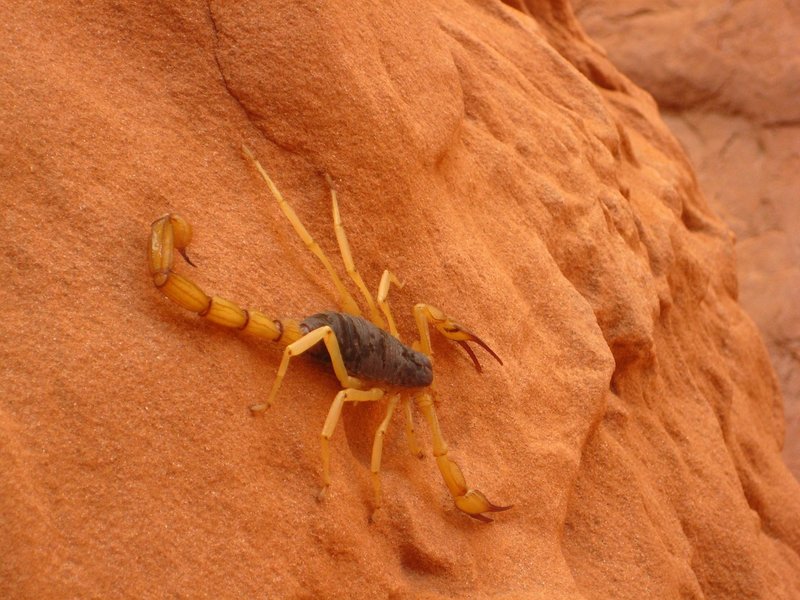
Think of identifying a Giant Hairy Scorpion like finding Waldo in a crowd. At first glance, everything might blend together, but once you know what to look for, it becomes a lot easier. So, let’s dive in and explore how to recognize this intriguing arachnid, focusing on its size, habitat, and unique features that make it stand out.
Understanding the Giant Hairy Scorpion’s Appearance
To put it simply, the Giant Hairy Scorpion is hard to miss. Typically, they measure between 4 to 7 inches long, with some individuals even stretching a bit longer. Imagine holding a ruler next to a hefty sandwich—that’s pretty much the size we’re talking about here! Their bodies are a deep black or dark brown with a notable hairy texture, hence the name. These hairs aren’t just for show; they serve a function, helping the scorpion sense its surroundings.
Their pincers are robust and large, making them look intimidating, but remember: they’re more about defense than aggression. Now, here’s something interesting: the scorpion’s tail, which curves up and over its back, is very pronounced. It’s like a warning sign—don’t mess with me! The stinger at the tail’s end is one of the scorpion’s most critical elements, and while it can deliver a painful sting, they usually don’t go out of their way to hurt humans.
Habitat: Where to Find the Giant Hairy Scorpion
So, where does this fascinating creature hang out? The Giant Hairy Scorpion primarily thrives in the arid desert regions of the southwestern United States and parts of Mexico, adapting well to the dry climate. Picture a sun-drenched landscape with sparse vegetation and rocky terrains—that’s their playground. They like to hide under rocks or in burrows during the hottest parts of the day, coming out primarily at night to hunt.
You might be wondering how they deal with the heat and arid conditions. They’re nocturnal, meaning they’re active at night when temperatures drop. This strategy helps them avoid the scorching sun, and it also makes searching for food a bit easier. So, if you’re out on a night hike in areas like Arizona or New Mexico, keep your eyes peeled—you might just spot one!
Behavior and Feeding Habits
Giant Hairy Scorpions are fascinating little predatory machines. They primarily feast on insects, such as crickets and beetles, but they’re not picky eaters. If they can catch a small rodent or another small animal, they won’t hesitate to have a go at it. Imagine a tiny, armored hunter lying in wait for its next meal—stealthy and efficient!
Interestingly, their hunting style is a bit like a cat stalking its prey. They use their sensitive hairs to pick up vibrations, helping them detect movement nearby. Once they spot a potential meal, they strike quickly, using their pincers to grab and immobilize it before delivering a venomous sting. Honestly, it’s a bit mesmerizing to think about how nature has equipped them with such impressive abilities to survive in their environments.
Common Misconceptions About Giant Hairy Scorpions
It’s easy to fall into some common myths about scorpions, especially when it comes to the Giant Hairy Scorpion. One major misconception is that all scorpions are highly aggressive. Here’s the thing: while they can be defensive, they aren’t out to get you. Most species, including the Giant Hairy Scorpion, prefer to mind their own business. The truth is, they’d rather flee than confront a human.
Another myth is that their sting is always life-threatening. Let me explain: while a sting can be painful and produce symptoms like swelling and redness, it’s rarely fatal to healthy adults. It can feel a bit like a bad bee sting, so if you’re allergic or have underlying health conditions, it’s wise to keep your distance.
What to Do If You Encounter One
If you happen to cross paths with a Giant Hairy Scorpion, try not to panic! Here’s a quick guide on what you can do:
- Stay Calm: Avoid sudden movements. They thrive on vibrations, and a quick motion might make it feel threatened.
- Back Away Slowly: If you’re too close, slowly back away. This gives the scorpion space to retreat if it wants.
- Observe from a Distance: These creatures are fascinating, so take a moment to observe them from a safe distance.
If you’re a curious person, you might consider carrying a camera to capture this moment without getting too close. Just remember, respect their space, and you’ll both be just fine.
Conservation Status and Importance
Giant Hairy Scorpions aren’t just fascinating creatures; they play a vital role in their ecosystem. By controlling insect populations, they help maintain a balanced food web. However, like many wildlife species, they’re affected by habitat loss due to urban development and climate change.
You might be wondering what can be done to help them. Supporting local conservation efforts and respecting natural habitats can go a long way. Every little bit helps, whether it’s spreading awareness or participating in habitat restoration projects.
The Giant Hairy Scorpion is more than just a large insect; it’s a remarkable creature with unique adaptations that help it survive in some of the harshest environments. From its striking appearance to its vital role in the ecosystem, there’s a lot to appreciate about this scorpion.
Whether you’re an entomology enthusiast or someone who’s just curious, knowing how to identify this fascinating creature can significantly enhance your outdoor experiences. So, the next time you find yourself exploring the desert, keep your eyes peeled. Who knows? You might just get lucky and encounter a Giant Hairy Scorpion in its natural habitat, reminding you of the wonders of wildlife.

